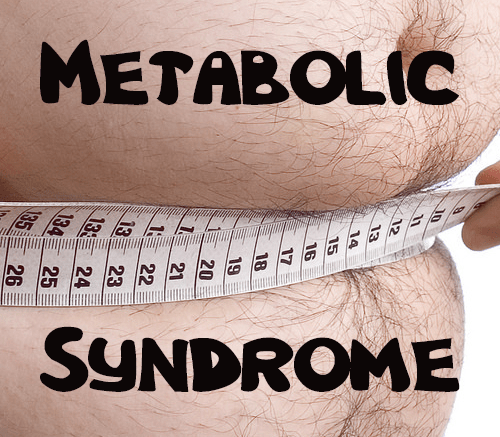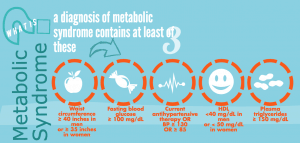Metabolic Syndrome: Is it more than just overweight?
What is metabolic syndrome? Metabolic syndrome, aka Syndrome X, is a common condition that is every bit as prevalent as the common cold and likely way more expensive for us to treat. Nearly 50 million Americans have metabolic syndrome, and it has a family, age-related, and ethnic predisposition. Older Hispanics and African Americans are the highest at risk.

To understand metabolic syndrome, you must first know what a syndrome is. A syndrome is simply a set of medical signs that correlate with one another and often a particular disease or complex of conditions. Signs are different from symptoms in that they are what the medical provider finds, and symptoms are what the patient reports.
So metabolic syndrome is a group of 5 potential signs of underlying or unreported disease. To have the syndrome, the patient must have 3 of 5 signs. The signs of metabolic syndrome are abdominal or central obesity, elevated blood pressure, elevated fasting plasma glucose, high serum triglycerides, and low high-density lipoprotein (HDL) levels. This particular syndrome predisposes the sufferer to heart disease, stroke, and diabetes.
Texas Heart refers to metabolic syndrome as the perfect storm, and they are correct. Over one-third of Americans suffer from metabolic syndrome; if you include the diseases it precludes, the numbers are higher. Metabolic Syndrome is essentially the same diagnosis as pre-diabetes. The good news is that it can be self-treated. If you have any of the symptoms, it is important that you are screened for metabolic syndrome to detect problems in the early stages when the body isn’t using sugar properly but becomes a diabetic.
Keep in mind that the underlying causes of metabolic syndrome include being overweight or obese, physical inactivity, and genetics. If you ignore the warning signs, metabolic syndrome will increase your risk of developing heart disease, type 2 diabetes, stroke, kidney disease, and claudication (poor blood supply to the legs).
The good news is that modest weight loss and moderate physical activity can delay and prevent type 2 diabetes and lower their risk of heart disease and stroke. Moderation is not easy but is attainable and sustainable.
Causes of Metabolic Syndrome:
Insulin resistance. Insulin is a hormone that helps your body regulate blood sugar by increasing cell uptake of blood sugar or glucose. In people with insulin resistance, the insulin doesn’t work as well so your body requires higher levels to regulate or remove glucose from the bloodstream. This is an early stage of diabetes.
• Central Obesity. Metabolic syndrome is becoming more common because of rising obesity rates. In addition, having extra fat in the belly seems to increase your risk.
•Unhealthy or inactive lifestyle. Eating a diet high in unhealthy processed foods and not getting enough physical activity can play a role.
•Hormonal imbalance. Hormones may play a role. For instance, polycystic ovary syndrome (PCOS), which affects fertility, is related to hormonal imbalance and metabolic syndrome.
So why should you care? Metabolic syndrome is directly tied to your increasing waistline. If you have an over 35-inch waist in females or a 40-inch waist in males, you are at high risk. The syndrome results in more than just diabetes and heart disease; it also results in infertility and erectile dysfunction. These two issues are enough to convince most of the serious life quality ramifications of their poor decisions.
How do I prevent it?
Since metabolic syndrome is a cluster of conditions and signs of oncoming illness, treatment starts with the underlying signs to prevent the disease it warns of in the coming future. If you already have one of the disease conditions, treatment is as simple as treating diabetes, hyperinsulinemia, high cholesterol levels, or high blood pressure you already have. If you just have metabolic syndrome, exercise and weight loss are key to improving insulin sensitivity and lowering blood pressure and cholesterol levels. If you have one of the metabolic disorders listed above, you should be under a doctor’s care to maximize control of them.
Recommendation for Folks with Metabolic Syndrome:
- Lose weight. Weight loss will increase insulin sensitivity,
- Exercise. Muscle growth and exercise will also reduce insulin sensitivity.
- Stop smoking. Tobacco increases your risk for heart disease.
- Moderate alcohol use. Alcohol is empty calories and can increase the risk for high blood pressure.
The bottom line: Metabolic syndrome can cause obesity and lead to earlier death. Make changes to avoid the outcome.








Leave a Reply